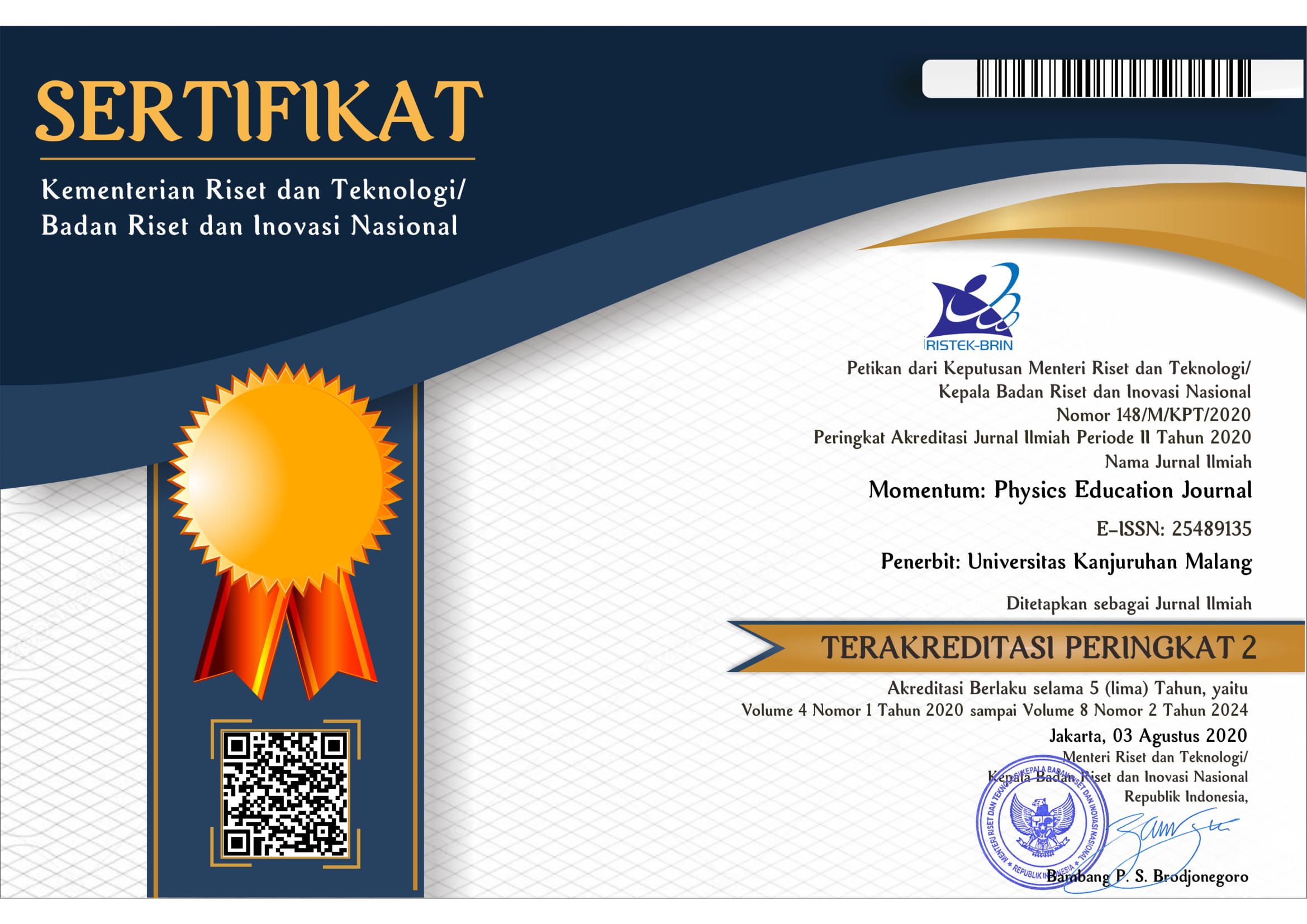Aids in physics: Design and development
DOI:
https://doi.org/10.21067/mpej.v4i2.4432Keywords:
Dioramas, Electricity, Games-based learning (GBL), PhyKER GamesAbstract
Electricity is found to be a difficult topic to learn due to its abstract concepts. Research showed that games based learning using dioramas can help students to interest and enhance students’ understanding in learning abstract Physics topics. As a result, PhyKER Games was developed in order to assist students in the learning of the Electricity circuit topic. ADDIE model (analysis, design, development, implementation and evaluation) as instructional design and develope of PhyKER Games. Dioramas were added in PhyKER Games to depict real scenes. The information delivery and the flow of content follow the ADDIE phases theory. It is hoped that the PhyKER Games would be able to assist students in the learning of Electricity circuit terms of concept understanding and motivation level.
Downloads
References
Akademi Sains Malaysia. (2015). Penilaian pelaksanaan projek rintis pendidikan sains berasaskan amalan inkuiri (IBSE) di empat buah sekolah rendah di Daerah Hulu Langat. Akademi Sains Malaysia.
Alias, S. N., & Ibrahim, F. (2017). Keberkesanan permainan pendidikan terhadap pembelajaran hukum Newton. Journal of Nusantara Studies (JONUS), 2(1), 71. https://doi.org/10.24200/jonus.vol2iss1pp71-85
Baser, M. (2006). Promoting conceptual change through active learning using open source software for physics simulations. Australasian Journal of Educational Technology, 22(3). https://doi.org/10.14742/ajet.1290
Blamire, R. (2010). Digital games for learning: Conclusions and recommendations from the IMAGINE project. European Schoolnet.
Dewan Bahasa dan Pustaka. (2005). Kamus dewan. Dewan Bahasa dan Pustaka Malaysia.
Halim, L., Yong, T. K., & Meerah, T. S. M. (2014). Overcoming students’ misconceptions on forces in equilibrium: An action research study. Creative Education, 05(11), 1032–1042. https://doi.org/10.4236/ce.2014.511117
Jaakkola, T., & Nurmi, S. (2008). Fostering elementary school students’ understanding of simple electricity by combining simulation and laboratory activities. Journal of Computer Assisted Learning, 24(4), 271–283. https://doi.org/10.1111/j.1365-2729.2007.00259.x
Kebritchi, M., Hirumi, A., & Bai, H. (2010). The effects of modern mathematics computer games on mathematics achievement and class motivation. Computers & Education, 55(2), 427–443. https://doi.org/10.1016/j.compedu.2010.02.007
Korganci, N., Miron, C., Dafinei, A., & Antohe, S. (2015). The importance of inquiry-based learning on electric circuit models for conceptual understanding. Procedia - Social and Behavioral Sciences, 191, 2463–2468. https://doi.org/10.1016/j.sbspro.2015.04.530
Rossett, A. (1987). Training needs assessment. Educational Technology.
Sudjana, N., & Rivai, A. (2011). Media pengajaran. Sinar Baru Algensindo.
Tan, W. H., Neill, S., & Johnston-Wilder, S. (2012). How do professionals’ attitudes differ between what game-based learning could ideally achieve and what is usually achieved. International Journal of Game-Based Learning, 2(1), 1–15. https://doi.org/10.4018/ijgbl.2012010101
Downloads
Published
How to Cite
Issue
Section
License
Momentum: Physisc Education Journal allows readers to read, download, copy, distribute, print, search, or link to the full texts of its articles and allow readers to use them for any other lawful purpose. 
This work is licensed under a Creative Commons Attribution 4.0 International License. The Authors submitting a manuscript do so with the understanding that if accepted for publication, copyright of the article shall be assigned to Momentum: Physics Education Journal


.png)
.png)
.png)
.png)





